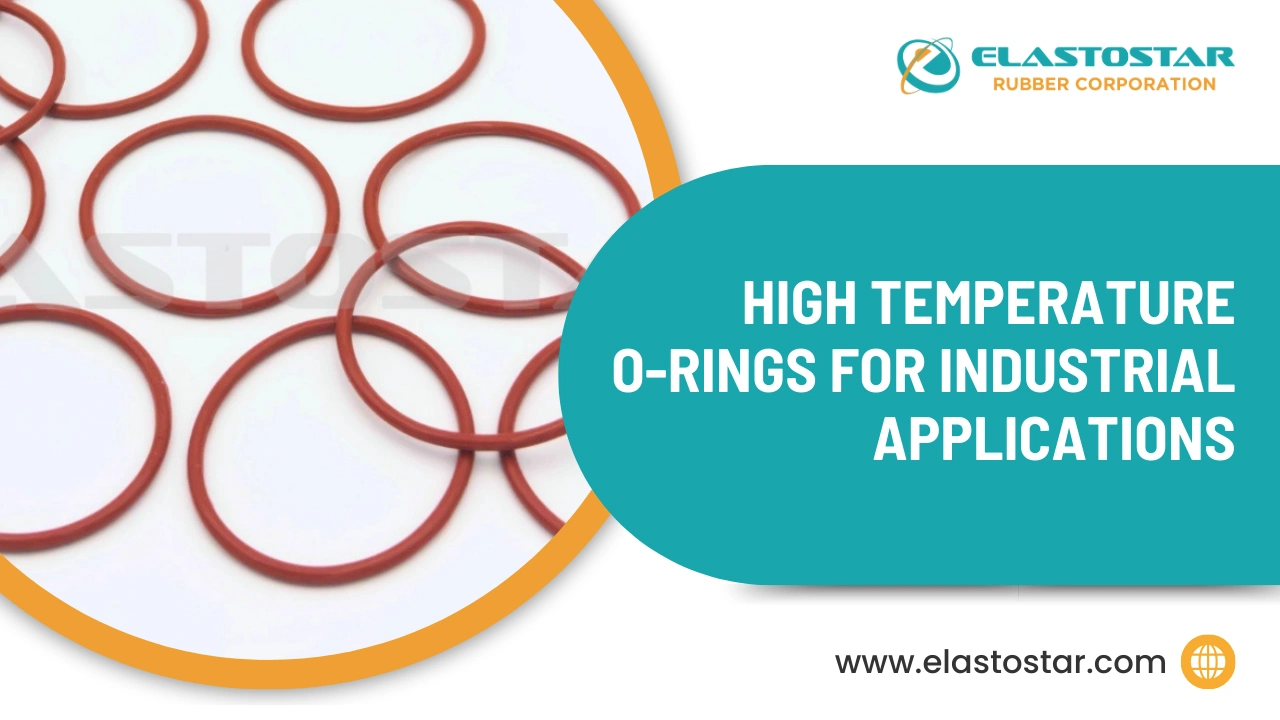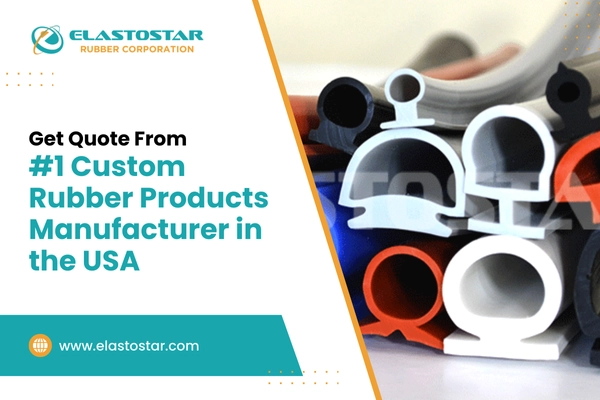Silicone products are used across industries for their flexibility, durability, and resistance to extreme temperatures and harsh environments. From automotive parts to medical devices, the quality and performance of these components often depend on the accuracy of the rubber molding processes.
Selecting the right technique influences not only the shape but also the function, longevity, and cost of production. Understanding various rubber processes is important for any rubber product manufacturer to deliver reliable and consistent results.
This blog covers three primary silicone rubber molding methods that are major in creating high-performance molded components.
Types of Silicone Rubber Gasket Molding Processes

Silicone rubber components can be manufactured using three primary molding techniques: compression, injection, and transfer molding.
Each process offers distinct advantages depending on the product design, production volume, material type, and application requirements.
Understanding the differences between these methods is important for selecting the most suitable solution that balances quality, efficiency, and cost-effectiveness.
1. Compression Molding
Process Overview
Compression molding involves placing unvulcanized silicone into a heated mold cavity. The mold is then closed, and pressure is applied to shape the material. This process manufactures durable, flexible parts with minimal material waste.
Advantages
- Cost-effective for low to medium production volumes
- Simple tooling and setup
- Ideal for producing thick, large components like silicone rubber gaskets
Limitations
- Longer cycle times compared to other molding methods
- Less suitable for parts with complex geometries
- Can result in a flash if not precisely controlled
Applications
- Automotive and industrial rubber gasket components
- Sealing rings and pads
- Electrical insulation parts – especially useful in environments demanding FDA-approved silicone rubber for food-grade seals
Elastostar’s Expertise
As a trusted rubber gasket manufacturer, we deliver high-performance rubber compression molding solutions. Its in-house capabilities include precise molding, custom formulations, and consistent quality across various industries.
2. Injection Molding
Process Overview
Injection molding involves forcing liquid silicone rubber (LSR) into a heated mold cavity using high pressure. This automated process is ideal for producing parts with tight tolerances and complex geometries for most efficient rubber molding machine-based techniques.
Advantages
- High repeatability and precision
- Suitable for intricate designs and thin-walled parts
- Fast cycle times for high-volume production
- Compatible with overmolding and insert molding
Limitations
- Higher tooling and setup costs
- Requires skilled design for molds and gating systems
- Less ideal for short runs due to upfront investment
Applications
- Medical-grade seals and valves
- Automotive grommets, plugs, and connectors
- Wearable electronics and sensor housings
- Food-grade and custom silicone products, such as silicone O-rings used in industrial systems
Elastostar Rubber Corporation’s Expertise
Elastostar leverages advanced rubber injection molding capabilities to deliver consistent, high-precision parts at scale. With specialized systems and decades of experience, they provide tailored solutions for complex geometries and demanding industry performance standards.
We follow a rigorous quality control process backed by industry certifications and in-house testing for every product to ensure it meets strict performance and safety criteria.
3. Transfer Molding
Process Overview
In transfer molding, premeasured silicone is placed into a chamber (or pot) and forced into the mold cavities through a system of runners. This process combines compression and injection molding elements, offering better control over part dimensions and rubber shaping.
Advantages
- Excellent dimensional stability and tight tolerances
- Ideal for insert molding and encapsulating components
- Suitable for moderate to high production runs
- Good surface finish and repeatability
Limitations
- More material waste compared to compression molding
- Higher tooling complexity and cost
- Slower than injection molding in high-volume settings
Applications
- Electrical application and electronic encapsulation
- Aerospace and automotive sealing elements
- Precision, custom rubber molded parts
Elastostar’s Expertise
We excel in complex rubber mold manufacturing projects using transfer molding. With extensive experience and advanced tooling capabilities, they offer high-performance solutions across industries that require demanding part configurations and high precision in rubber molding material usage.
Comparative Analysis of Molding Processes
Choosing the right molding method depends on several factors, including design complexity, production volume, material use, and budget. Each compression, injection, and transfer molding process has strengths and best-fit applications.
| Feature / Factor | Compression Molding | Injection Molding | Transfer Molding |
| Material Type | High Consistency Rubber (HCR) | Liquid Silicone Rubber (LSR) | HCR or LSR |
| Tooling Cost | Low to Medium | High | Medium |
| Production Volume | Low to Medium | High | Medium |
| Cycle Time | Longer | Fast | Medium |
| Part Complexity | Simple to Moderate | High | Moderate to High |
| Flash Control | Moderate | Excellent | Good |
| Common Applications | Gaskets, Seals, Pads | Medical parts, Electronics, Wearables | Inserts, Electronic Encapsulation |
| Best For | Large parts, cost-sensitive runs | Precision, high-volume parts | Insert molding, tight tolerances |
These rubber molding techniques are commonly used across various industries where elastomer molding is vital in performance and durability.
Check out our silicone rubber extrusion process for deeper insight into silicone extrusion and forming methods beyond molding.
Understanding these differences helps manufacturers like Elastostar guide clients toward the most effective, cost-efficient production method for their unique needs.
Recommended Reads
- Why FDA-Approved Silicone Rubber is Preferred for Food Industry Gaskets & Seals
- Top Benefits of Using Silicone Rubber in the Aerospace Industry
- How to Select the Right Silicone O-Rings for Industrial Applications
Conclusion
Each silicone molding process offers unique benefits: compression molding suits large, simple parts; injection molding delivers high precision for complex, high-volume products; and transfer molding bridges the gap with excellent dimensional control. Choosing the right method depends on part design, durability needs, and budget.
As a trusted silicone seals manufacturer, we help clients select the ideal process to meet performance and production goals consistently and with quality.
Do you have a project in mind? Contact Elastostar for expert guidance and custom-molded silicone solutions tailored to your application needs.
FAQs
What are the different types of silicone molding?
The main types of silicone rubber molding are compression, injection, and transfer. Each method fits different production and design needs. Elastostar Rubber Corporation offers expert solutions in all three, delivering high-performance molded silicone components.
What are the three types of molding?
The three most common molding processes for silicone rubber are compression molding, injection molding, and transfer molding. These are used based on part complexity and production goals. To learn which method fits your product, contact Elastostar Rubber Corporation.
How is silicone molded?
Silicone is molded using heat and pressure in a shaped mold cavity. Processes like compression and injection molding are used to form precision custom silicone products, including seals, tubing, and o-rings tailored to your application.
How many types of silicone rubber are there?
Several types of silicone rubber are Available, Including High-Consistency Rubber (HCR), Liquid Silicone Rubber (LSR), and Fluorosilicone. Each is selected based on the performance needs in rubber molding processes.
What are the different types of rubber molding processes?
The most used rubber molding techniques are compression, injection, transfer molding, calendering, and extrusion. Elastostar Rubber Corporation manufactures custom-molded seals, gaskets, and profiles using all major molding methods. Connect with us here for details.
What are the 3 properties of silicone?
Silicone rubber is known for heat resistance, chemical stability, and flexibility. These properties make it ideal for producing durable rubber gasket components in pharmaceutical, industrial, and aerospace applications.



